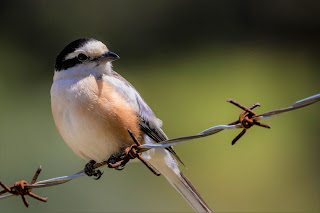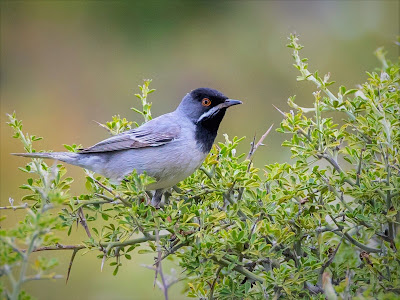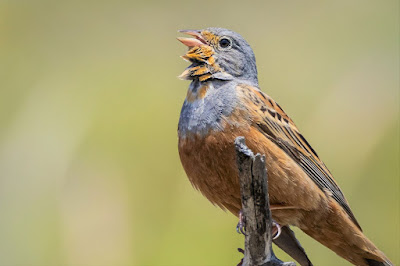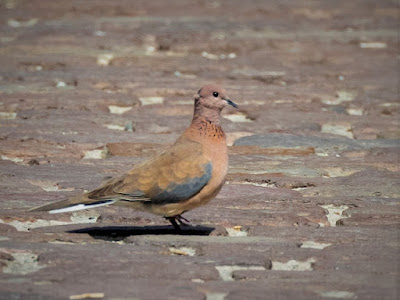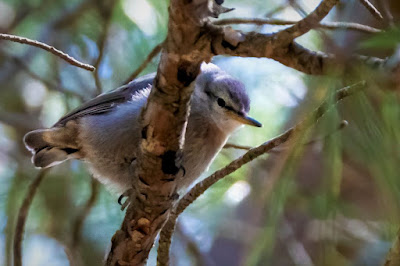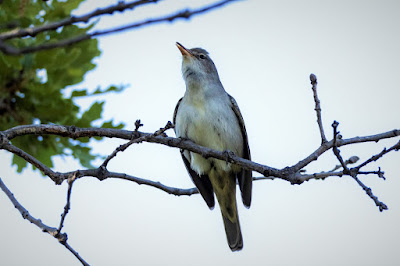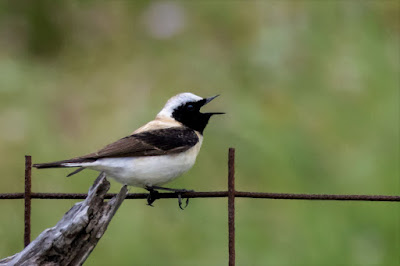Lesvos Trip Report, Day 4: Photographing the MEGA-lifers
A trip report our fourth birding day in the island of Lesvos. Today we are looking for some Mega-lifers, i.e. the birds that most birders in Lesvos are looking for every year. These species require deep knowledge of their behavior and habitats, lots of patience, as well as a great amount of luck.
We had to
change our vehicle to a larger one, in order to guide 5 Italian bird
photographers that were visiting the island for the first time. Since Italy has
very similar birds species, they wanted to see and photograph some Lesvos
special ones, which were all lifers for the member of our group. So we had two
days available to look for Long-legged Buzzard, Levant Sparrowhawk, Kruper’s
Nuthatch, Rock Nuthatch, Blue Rock Thrush, Rufous Bush Chat, Isabelline
Wheatear, Olive-tree Warbler, Rueppell’s Warbler, Eastern Bonelli’s Warbler,
Cinereous Bunting, Cretzscmar’s Bunting.
We started
from the least visited part of the island, the eastern coast. After destroyed
by mass fires a few years ago, it is now home for some of the most wanted
species: Rueppell’s Warbler. A few
minutes after arriving at the right locations, we saw several birds that we
singing in very close distance. BINGO! One of our most important targets was
already seen and photographed. Nearby we observed pairs of Cretzschmar’s Buntings, Sardinian Warblers and Eastern Black-eared Wheatears. As soon as we were leaving the area,
a pair of Chukars crossed the road and stayed for a while in a nearby field.
Another lifer for some of the group, and a few opportunities to take some more
nice bird photos.
The Laughing Doves have started breeding in
the island the last 5 year, so this was another lifer for members of our group. The small village of Loutra is one of the
most reliable places to find nesting pairs. We managed to see the nest with the
chicks, but the parents seemed to be out in search for food. A few minutes
later, we saw the parents hopping from one electric pole to the other, landing
finally at the next, on a window next to the road.
After
taking an Italian espresso at the village of Loutsa, we drove west towards
Polychnitos. We were looking for another Lesvos highlight and target species
for all birders that visit annually the island: Kruepper’s Nuthatch. Lesvos is the only location in Europe that
this species is thriving, especially around the pine forests of Agiasos and
Achladeri area. We searched for more than 1 hour between the pine trees, only
listening to Short-toed Treecreepers and Chaffinches. Suddenly, a very loud and
characteristic call of the birds made us alert and after a few minutes we
managed to clearly see more than 3 birds.
The next
big lifer was the elusive Olive-tree
Warbler. There are several reliable site for this bird, however finding it
and actually photographic it has always been a major task. This year, we
decided to search the area around Potamia Valley, close to Kalloni. This vast
area of olive orchards is ideal for this warbler. Indeed we found at least 3
birds and enjoyed hundreds of photographic “clicks”. Other species we saw in
the area were Turtle Doves, Masked Shrikes and Middle-spotted Woodpeckers.
No time for
lunch, just a pick-nick in the area under the tree canopy and soon we were
heading to Parakoila, a steep rocky area west of Kalloni. We were lucky to see
a pair of Common Cuckoos displaying and a few more Eastern-Black-eared
Wheatears. The place was particularly chosen for the breeding Sombre Tit, a
bird that we did not find the previous days and it was another important lifer
for most birders of the team. Driving up the rocky road, close to a Shepard’s
shed, we saw 2 Sombre Tits, very active ones indeed.
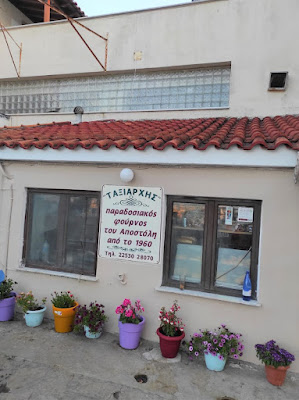
Taxiarchis Bakery at Skalla Kallonis,
a must visit for early-wakeup birders as well as local hangover teens
It was late
afternoon, so a last visit at Kalloni Saltpans was required, to get as many
photos as possible during the “golden hours”. Cold beer and excellent seafood at
Dionysos Taverna proved to be the best ending in a highly successful birding
day.


